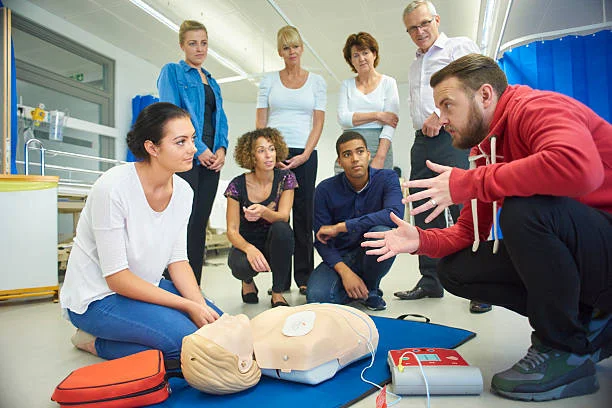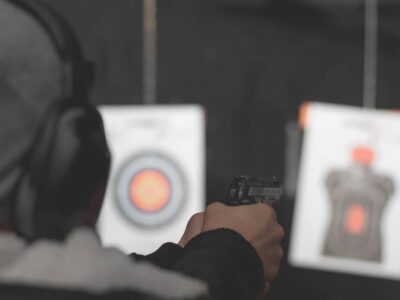
First aid courses are designed to equip individuals with the knowledge and skills necessary to provide immediate care in the event of an injury or medical emergency. These courses cover a wide range of topics, from basic wound treatment to life-saving techniques. The importance of first aid training cannot be overstated, as it empowers individuals to act confidently and effectively during critical moments, potentially saving lives and minimizing the severity of injuries. In this article, we will explore what first aid courses entail and why they are essential.

What Are First Aid Courses?
First aid courses are structured programs that teach participants how to respond to various medical emergencies. These courses are available at different levels, catering to beginners as well as those seeking advanced skills. Here’s a breakdown of what a typical first-aid course includes:
Basic First Aid
Basic first aid courses cover fundamental skills and knowledge, including:
- Wound Care: How to clean, dress, and manage cuts, scrapes, and burns.
- CPR (Cardiopulmonary Resuscitation): Techniques for performing CPR on adults, children, and infants.
- Choking: Procedures to assist someone who is choking, including the Heimlich maneuver.
- Bleeding Control: Methods to control and stop bleeding using pressure and bandages.
- Shock Management: Recognizing and treating symptoms of shock.
Advanced First Aid
Advanced courses build on basic skills and introduce more complex procedures, such as:
- Advanced CPR and AED (Automated External Defibrillator): Using an AED and performing advanced CPR techniques.
- Fracture and Sprain Management: How to immobilize and care for fractures and sprains.
- Medical Emergencies: Managing conditions like heart attacks, strokes, and diabetic emergencies.
- Environmental Emergencies: Responding to heat stroke, hypothermia, and other environmental injuries.
- Triage: Prioritizing care in multi-casualty incidents.
Specialized First Aid
There are also specialized courses tailored to specific environments or professions, such as:
- Pediatric First Aid: Focused on providing first aid to infants and children.
- Sports First Aid: Addressing injuries common in sports and physical activities.
- Workplace First Aid: Ensuring employees can respond to workplace-related injuries and emergencies.
- Wilderness First Aid: Techniques for providing care in remote or outdoor settings where medical help may be delayed.
Why First Aid Courses Are Important
First aid courses are crucial for several reasons, from enhancing personal safety to fostering a safer community. Here’s why everyone should consider taking a first-aid course:
Saving Lives
The most compelling reason for first aid training is its potential to save lives. In emergencies like cardiac arrest or severe bleeding, immediate intervention can mean the difference between life and death. CPR and the use of an AED can significantly increase the chances of survival for cardiac arrest victims.
Reducing the Severity of Injuries
Prompt first aid can prevent injuries from worsening. For instance, controlling bleeding, immobilizing fractures, or treating burns quickly can reduce the risk of complications and facilitate faster recovery. Proper first aid can also prevent infections and other secondary issues.
Promoting Confidence and Preparedness
First aid training empowers individuals to act confidently in emergencies. Knowing what to do and having the skills to do it reduces panic and ensures that help is provided efficiently. This preparedness is crucial not just at home, but also in the workplace, at school, and in public places.
Ensuring Workplace Safety
Many workplaces require employees to be trained in first aid, particularly in industries with higher risks of injuries, such as construction, manufacturing, and hospitality. Trained staff can manage workplace injuries effectively, reducing downtime and enhancing overall safety.
Supporting Mental Health
First aid training often includes basic psychological first aid, which helps individuals support others experiencing emotional distress or trauma. This aspect of first aid is increasingly recognized as vital, given the rising awareness of mental health issues.
Enhancing Community Resilience
Communities with a higher number of trained individuals are better equipped to handle emergencies collectively. First aid training fosters a sense of responsibility and community spirit, as people are more willing and able to assist others in need.
Meeting Legal and Professional Requirements
Certain professions and activities legally require first aid certification. For example, teachers, childcare providers, lifeguards, and sports coaches often need to have up-to-date first aid training. Compliance with these requirements is essential for professional practice and legal liability.
Supporting Personal and Family Safety
First aid training is invaluable for personal and family safety. Parents, in particular, benefit from pediatric first aid courses that teach how to handle common childhood emergencies. Being trained in first aid ensures that you can care for your loved ones in crises.
Conclusion
First aid courses are an essential investment in personal and public safety. They provide individuals with the skills and confidence to respond effectively to medical emergencies, potentially saving lives and reducing the severity of injuries. The benefits of first aid training extend beyond the immediate response, fostering a safer, more prepared community. Whether for personal growth, professional requirements, or community service, enrolling in a first aid course is a step everyone should consider.
For more information on first aid courses and how they can benefit you, visit our First Aid Training Programs page. Additionally, check out related training programs on Hurak.com to find a course that suits your needs. Remember, the knowledge you gain from first aid training could one day make a critical difference.










